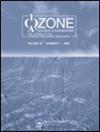污水污泥臭氧化过程中磷的行为
IF 1.4
4区 环境科学与生态学
Q3 ENGINEERING, ENVIRONMENTAL
引用次数: 0
摘要
摘要磷是一种不可再生的生命必需元素,因此了解其潜在的供应来源至关重要。由于废活性污泥(WAS)是一个重要的磷池,本文描述了它在臭氧化过程中的行为。此外,基于标准、测量和测试程序的分析,我们研究了WAS的臭氧化是否可以成为一种有效的方法,既可以回收溶液中的磷,也可以回收固体残留物中的生物和植物可利用性。结果表明,磷在浓度大于23 mg/g时富集。随着臭氧用量从0 g O3/g MLSS增加到0.20 g O3/g MLSS,磷从固相转移到液相,液相中总磷含量从1.67 mg/L增加到40.68 mg/L。臭氧氧化后液相中磷的主要形态为PO4 - 3-P,有利于磷的回收。磷组分分析表明,臭氧氧化释放的磷主要来自磷灰石磷(AP)。此外,当臭氧用量为0.20 O3/g MLSS时,固体残渣中生物有效磷(非磷灰石无机磷(NAIP) +有机磷(OP))的比例从原was的73.6%提高到91.7%,磷在固体残渣中的可利用性更高。另外,臭氧化处理后的固体残渣在中等铁磷比(0.91)下适合植物利用。因此,臭氧氧化被推荐为在液相和固体残留物中实现高级P供应的首选解决方案。本文章由计算机程序翻译,如有差异,请以英文原文为准。
Behavior of Phosphorus during Sewage Sludge Ozonation
ABSTRACT Since phosphorus (P) is a nonrenewable element essential for life, it is extremely important to understand its potential supply sources. This paper describes the behavior of P during the ozonation of waste activated sludge (WAS) as it is an important pool of P. Also, we investigated whether ozonation of WAS could be an effective method for both P recovery in solution and its bio- and plant-availability in solid residues based on the analysis by the Standards, Measurements, and Testing Program. The results showed that P was enriched in WAS at concentrations above 23 mg/g. Phosphorus transferred from the solid phase to the liquid phase, and the total P content in the liquid phase increased from 1.67 to 40.68 mg/L as the ozone dosage increased from 0 to 0.20 g O3/g MLSS. PO4 3–P was the main form of P in the liquid phase after ozonation, which is beneficial for P recovery. The P fraction analysis revealed that the released P mainly came from apatite P (AP) during ozonation. Additionally, P was more available in solid residues as the proportion of bio-available P (non-apatite inorganic P (NAIP) + organic P (OP)) improved from 73.6% in the raw WAS to 91.7% at an ozone dosage of 0.20 O3/g MLSS. In addition, the solid residues were suitable for plant availability at a moderate Fe/P ratio (0.91) after ozonation. Thus, ozonation is recommended as the preferable solution to achieve an advanced P supply in both the liquid phase and solid residues.
求助全文
通过发布文献求助,成功后即可免费获取论文全文。
去求助
来源期刊

Ozone: Science & Engineering
环境科学-工程:环境
CiteScore
5.90
自引率
11.10%
发文量
40
审稿时长
2 months
期刊介绍:
The only journal in the world that focuses on the technologies of ozone and related oxidation technologies, Ozone: Science and Engineering brings you quality original research, review papers, research notes, and case histories in each issue. Get the most up-to date results of basic, applied, and engineered research including:
-Ozone generation and contacting-
Treatment of drinking water-
Analysis of ozone in gases and liquids-
Treatment of wastewater and hazardous waste-
Advanced oxidation processes-
Treatment of emerging contaminants-
Agri-Food applications-
Process control of ozone systems-
New applications for ozone (e.g. laundry applications, semiconductor applications)-
Chemical synthesis.
All submitted manuscripts are subject to initial appraisal by the Editor, and, if found suitable for further consideration, to peer review by independent, anonymous expert referees.
 求助内容:
求助内容: 应助结果提醒方式:
应助结果提醒方式:


